Vestre resides in The Opera Park
For Vestre, openness and inclusion were obvious guiding principles during this year’s 3daysofdesign in Copenhagen. Vestre showcased several of its urban furniture ranges as part of an accessible exhibition in the Opera Park, created in collaboration with award-winning Swedish design studio Note. The exhibition featured the new UNITY collection, designed by German landscape architect and urban designer Nikolai Soyka and his agency schöne aussichten landschaftsarchitektur (sala).
For Vestre, openness and inclusion were obvious guiding principles, and their exhibition in the green oasis Operaparken was open to everyone.
“For Vestre, it was the perfect environment in which to turn our mission into reality: to create designs that go beyond aesthetics and invite people to pause, connect, and make the space their own. We chose this place because it’s open, welcoming, and accessible, and it belongs to everyone,” said Bjørn Fjellstad, CEO of Vestre.
The Opera Park is a vibrant green oasis on the Copenhagen harbor front, designed to complement the nearby Royal Danish Opera House. Taking inspiration from Danish landscapes, the park combines nature, culture, and sustainability with winding paths, lush greenery, and scenic views. The park offers both a peaceful retreat and a dynamic venue for cultural events, reflecting Copenhagen’s dedication to sustainable urban planning.
“Vestre’s exhibition aimed to add even more color to the Opera Park, and to inspire interaction, contact, and summertime joy through a selection of Vestre’s inclusive design furnishings,” said Fjellstad.
The Opera Park is a vibrant green oasis on the Copenhagen harbor front, designed to complement the nearby Royal Danish Opera House. Taking inspiration from Danish landscapes, the park combines nature, culture, and sustainability with winding paths, lush greenery, and scenic views. The park offers both a peaceful retreat and a dynamic venue for cultural events, reflecting Copenhagen’s dedication to sustainable urban planning.
“Vestre’s exhibition aimed to add even more color to the Opera Park, and to inspire interaction, contact, and summertime joy through a selection of Vestre’s inclusive design furnishings,” said Fjellstad.
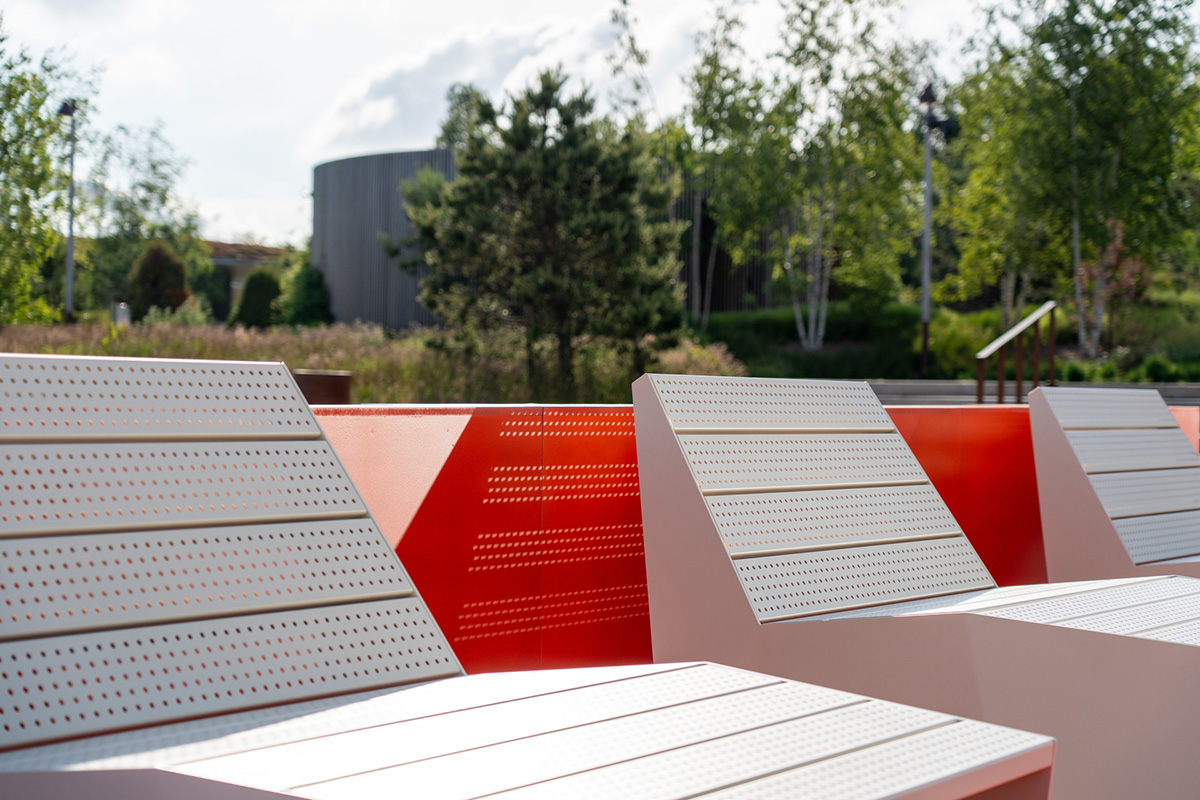
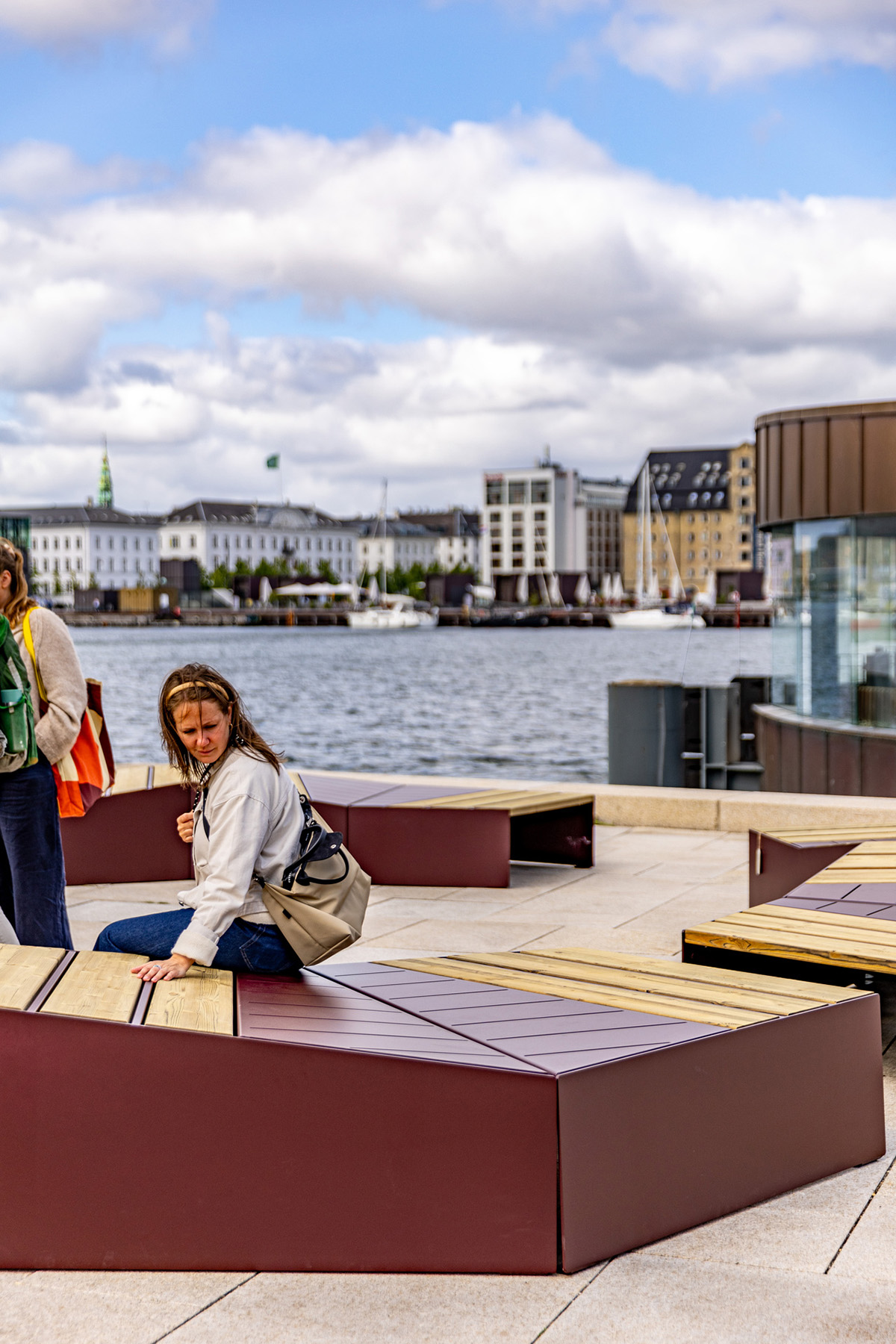
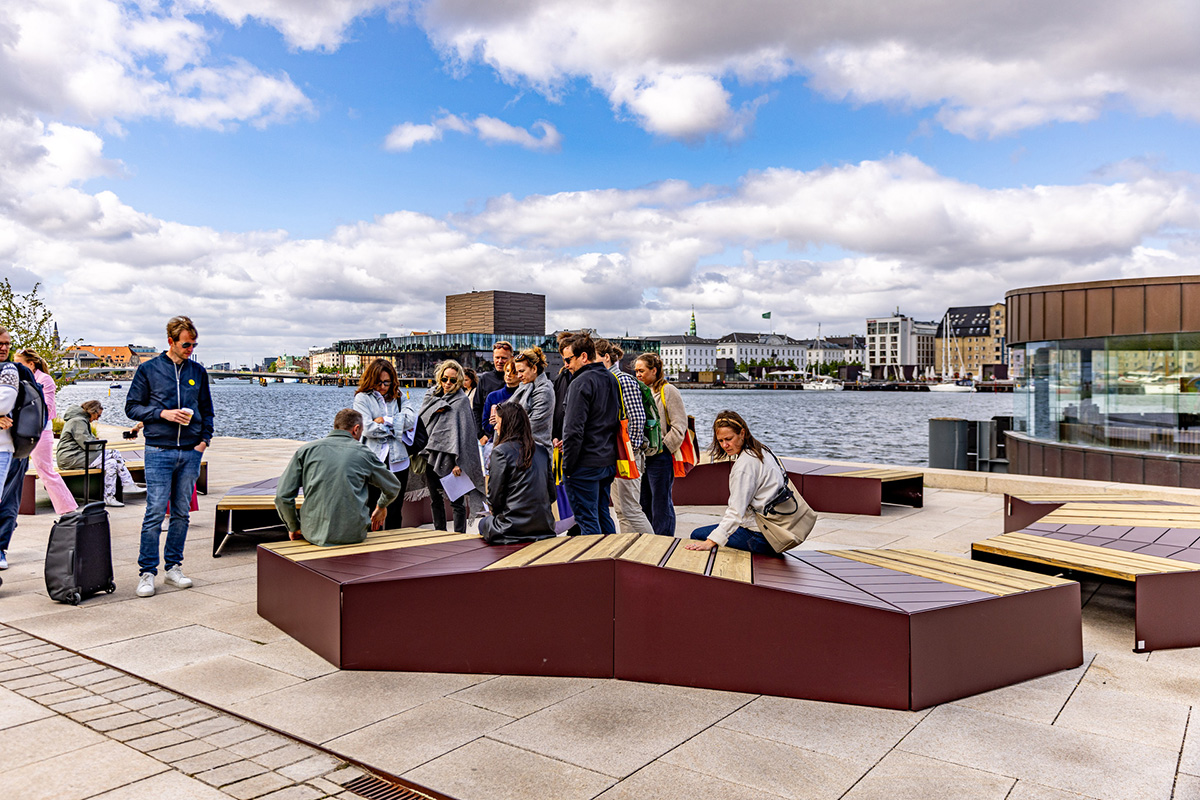
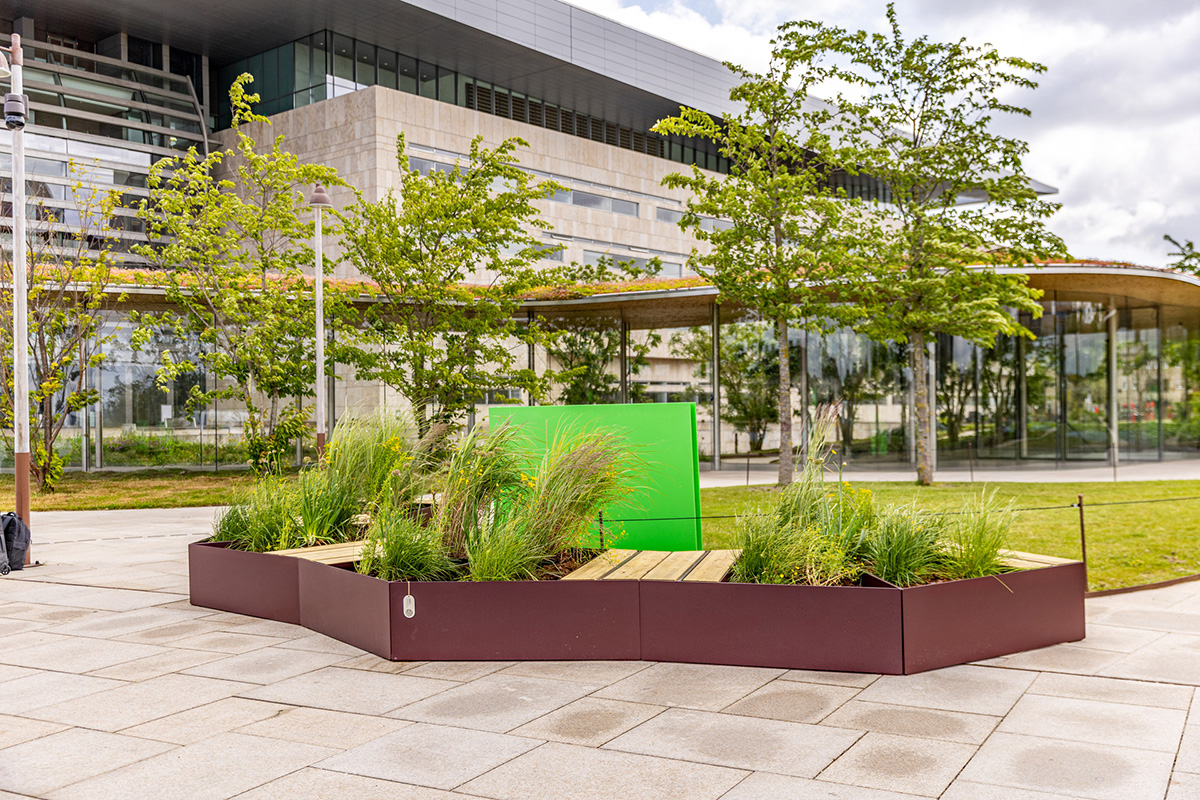
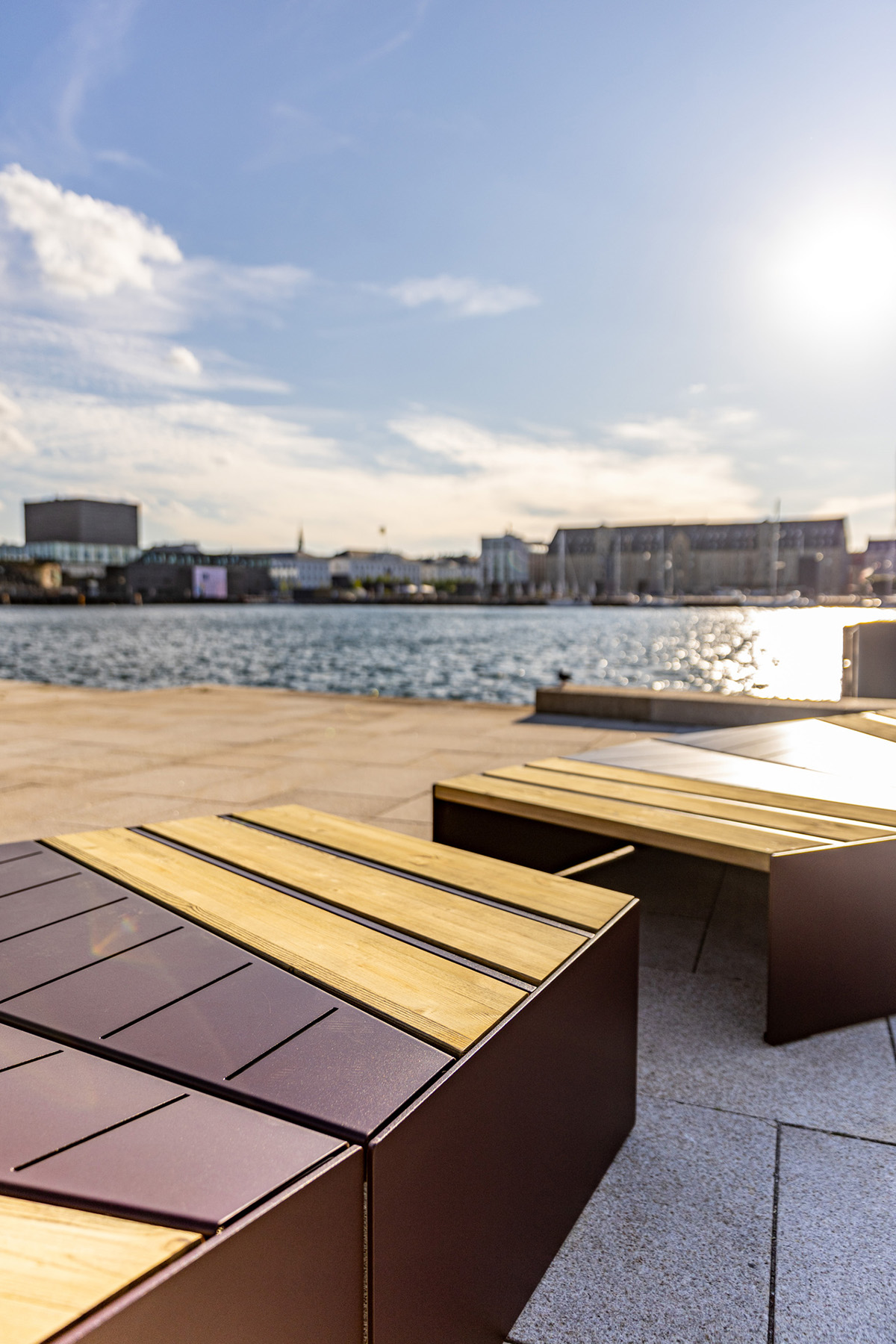
Exhibition created by proven partnership
The exhibition was created in collaboration with Swedish design studio Note, which on numerous occasions has created Vestre stands and exhibitions at events such as the Stockholm Furniture Fair and Salone del Mobile in Milan. These collaborations have earned several prestigious nominations and awards, including Vestre’s Note-designed stand being named “Best Stand” at the 2020 Stockholm Furniture Fair.
“Our vision started with a simple but powerful question: What does belonging mean, and how can design help create that feeling? But while a sense of belonging is essential to our identity and well-being, it’s not something that can just be handed over. It’s something we feel, share, and build together. Belonging flourishes in spaces that spark curiosity, invite interaction, and embrace differences,” said Charlotte Ackemar, Product Designer at Note.
The installation was divided into four different zones, each exploring the theme of belonging in a variety of ways. Each zone featured unique furniture arrangements that were designed to encourage interaction, connection, and shared experiences.
In the “Unity” zone, which was located closest to the Opera on Holmen along the water and near the ferry, Vestre’s latest launch was on display.
“We wanted to develop something that cannot be easily categorized. We wanted to offer a variety of different uses to as many different people as possible,” said Nikolai Soyka from the German design agency schöne aussichten landschaftsarchitektur (sala), which was behind the new collection.
Note created an area that combined sheltered zones with open and airy sections. The furnishings consisted entirely of different constellations of the new furniture series, most of which had space for plants in the modules.
“We wanted to create just that kind of space for Vestre’s exhibition in the Opera Park—a place that felt welcoming,” said Ackemar and continued: “A space where imagination leads to connection, and where every element—furnishings, layout, and color—encourages people to pause, engage, and feel at ease.”
“Our vision started with a simple but powerful question: What does belonging mean, and how can design help create that feeling? But while a sense of belonging is essential to our identity and well-being, it’s not something that can just be handed over. It’s something we feel, share, and build together. Belonging flourishes in spaces that spark curiosity, invite interaction, and embrace differences,” said Charlotte Ackemar, Product Designer at Note.
The installation was divided into four different zones, each exploring the theme of belonging in a variety of ways. Each zone featured unique furniture arrangements that were designed to encourage interaction, connection, and shared experiences.
In the “Unity” zone, which was located closest to the Opera on Holmen along the water and near the ferry, Vestre’s latest launch was on display.
“We wanted to develop something that cannot be easily categorized. We wanted to offer a variety of different uses to as many different people as possible,” said Nikolai Soyka from the German design agency schöne aussichten landschaftsarchitektur (sala), which was behind the new collection.
Note created an area that combined sheltered zones with open and airy sections. The furnishings consisted entirely of different constellations of the new furniture series, most of which had space for plants in the modules.
“We wanted to create just that kind of space for Vestre’s exhibition in the Opera Park—a place that felt welcoming,” said Ackemar and continued: “A space where imagination leads to connection, and where every element—furnishings, layout, and color—encourages people to pause, engage, and feel at ease.”
In the “Unity” zone, which was located closest to the Opera on Holmen along the water and near the ferry, Vestre’s latest launch was on display.
“We wanted to develop something that cannot be easily categorized. We wanted to offer a variety of different uses to as many different people as possible,” said Nikolai Soyka from the German design agency schöne aussichten landschaftsarchitektur (sala), which was behind the new collection.
Note created an area that combined sheltered zones with open and airy sections. The furnishings consisted entirely of different constellations of the new furniture series, most of which had space for plants in the modules.
“We wanted to create just that kind of space for Vestre’s exhibition in the Opera Park—a place that felt welcoming,” said Ackemar and continued: “A space where imagination leads to connection, and where every element—furnishings, layout, and color—encourages people to pause, engage, and feel at ease.”
Note created an area that combined sheltered zones with open and airy sections. The furnishings consisted entirely of different constellations of the new furniture series, most of which had space for plants in the modules.
“We wanted to create just that kind of space for Vestre’s exhibition in the Opera Park—a place that felt welcoming,” said Ackemar and continued: “A space where imagination leads to connection, and where every element—furnishings, layout, and color—encourages people to pause, engage, and feel at ease.”
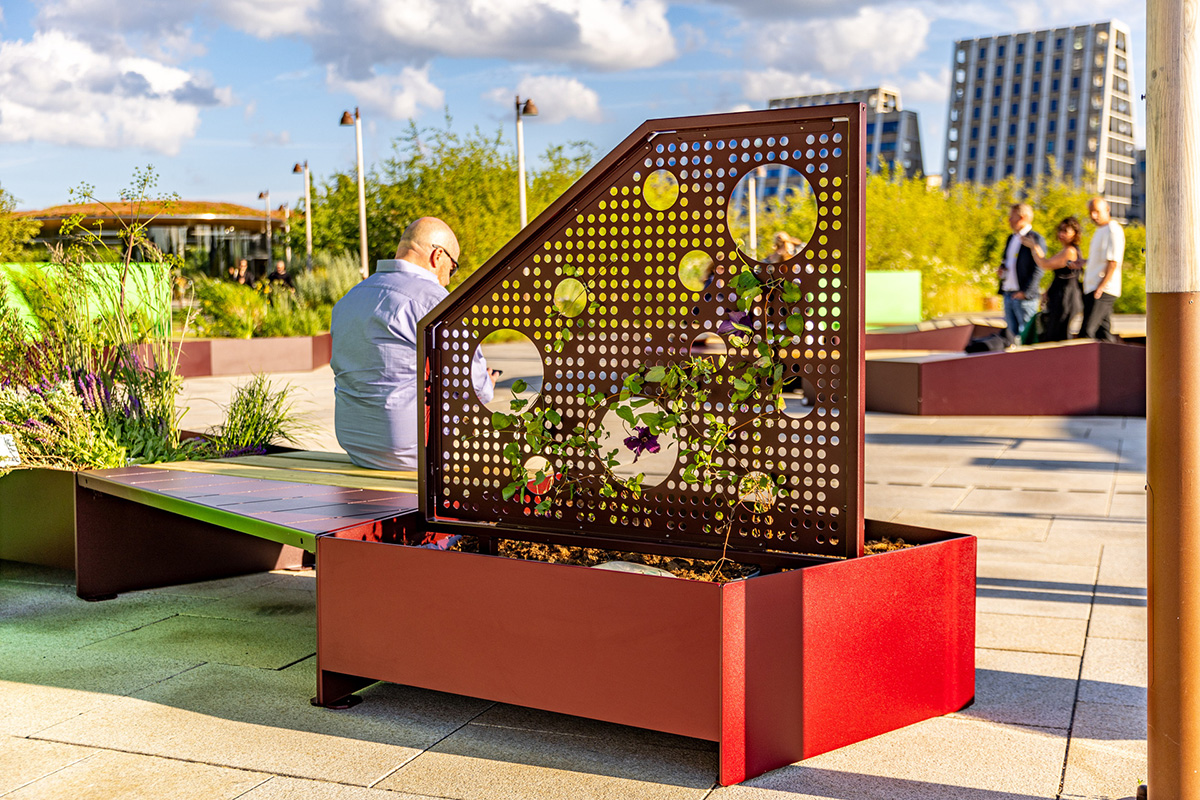
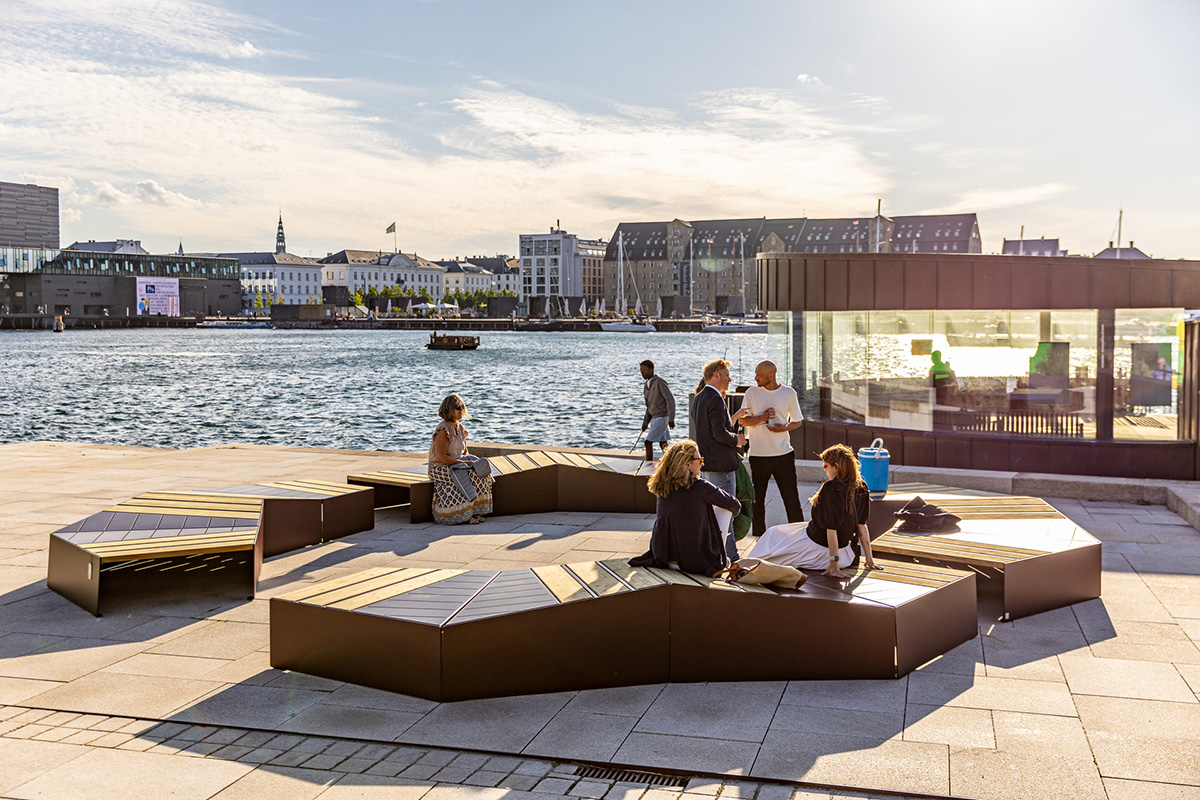
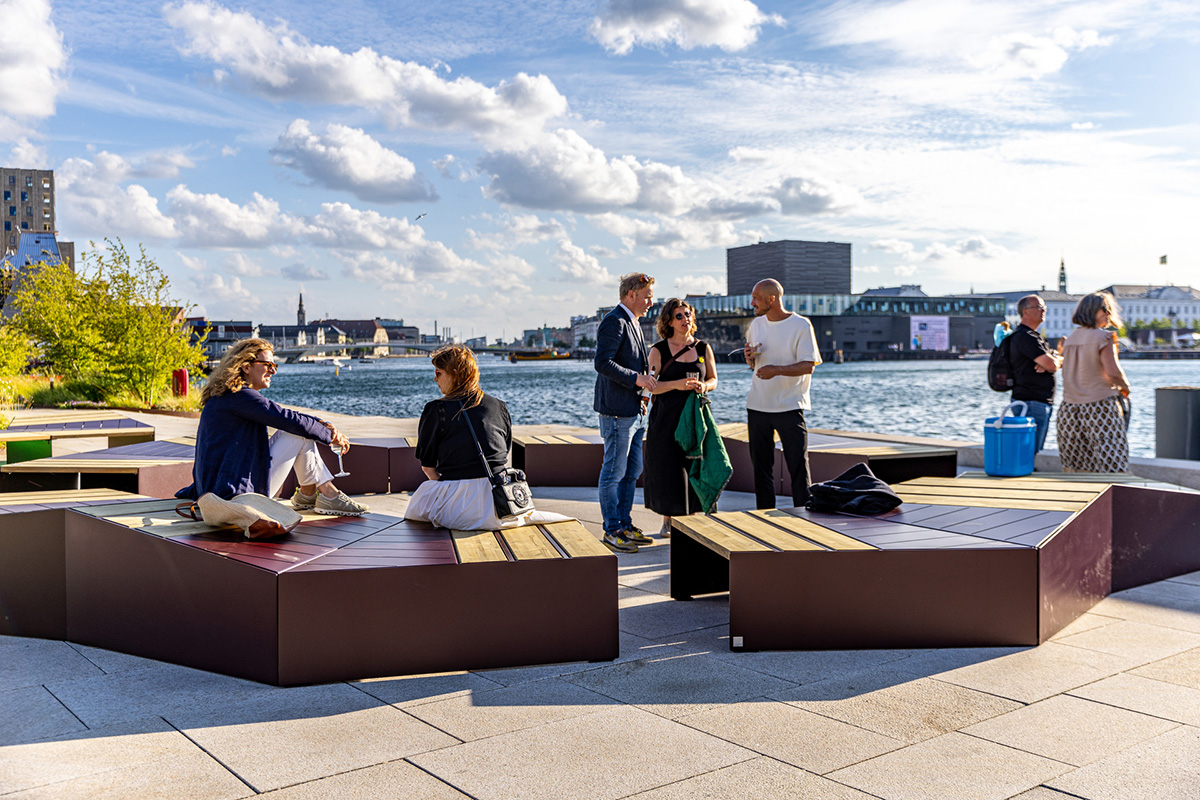
The four unique zones
As visitors entered the Opera Park, they were greeted by a burst of color and form—an immersive, impactful experience that was designed to awaken visitors’ senses. Note worked with large-scale features, both vertical and horizontal, and used bold blocks of color as backdrops and platforms. These blocks of color served several purposes: they created visual focal points, set the tone of the space, and helped guide visitors through the exhibition.
“One key role of the blocks of color was to frame the Vestre furnishings and visually set them apart from the park’s permanent fixtures. This not only highlighted the temporary nature of the installation but also respected and complemented the park’s existing environment and design idiom. Ultimately, the goal was to create a space that felt vibrant and inclusive,” said Ackemar.
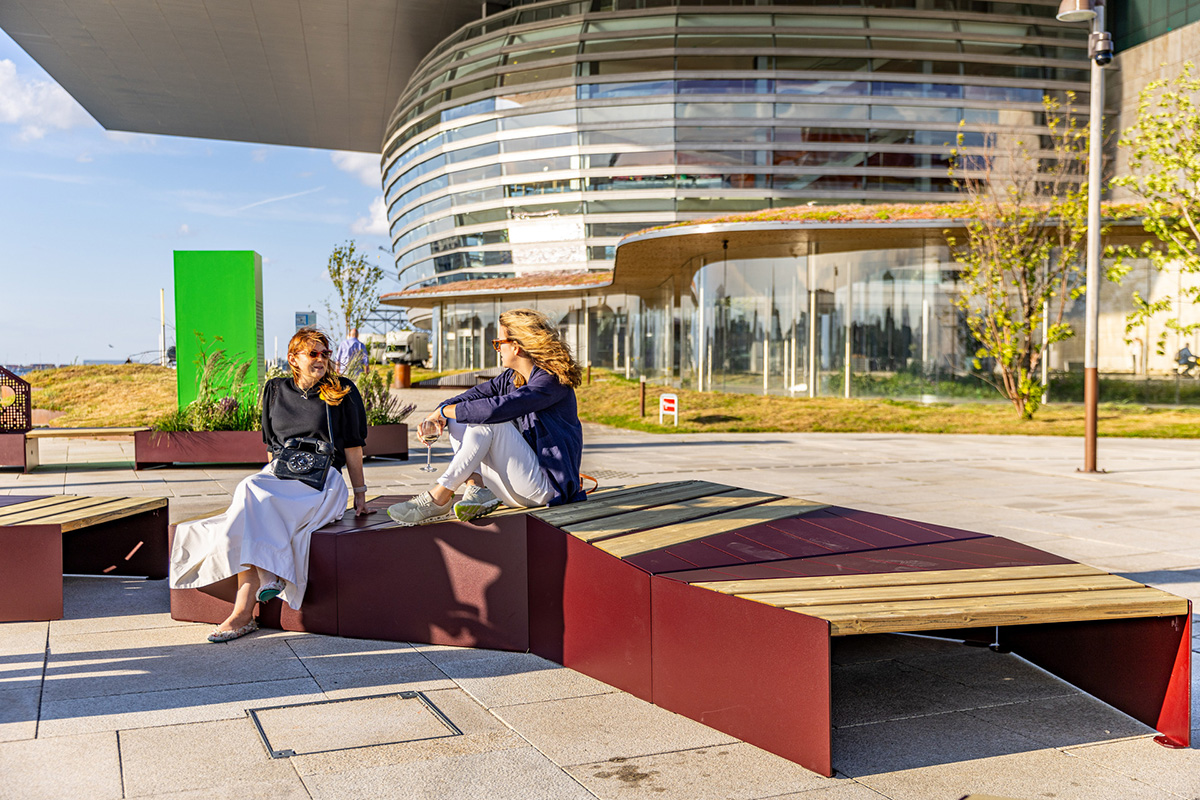
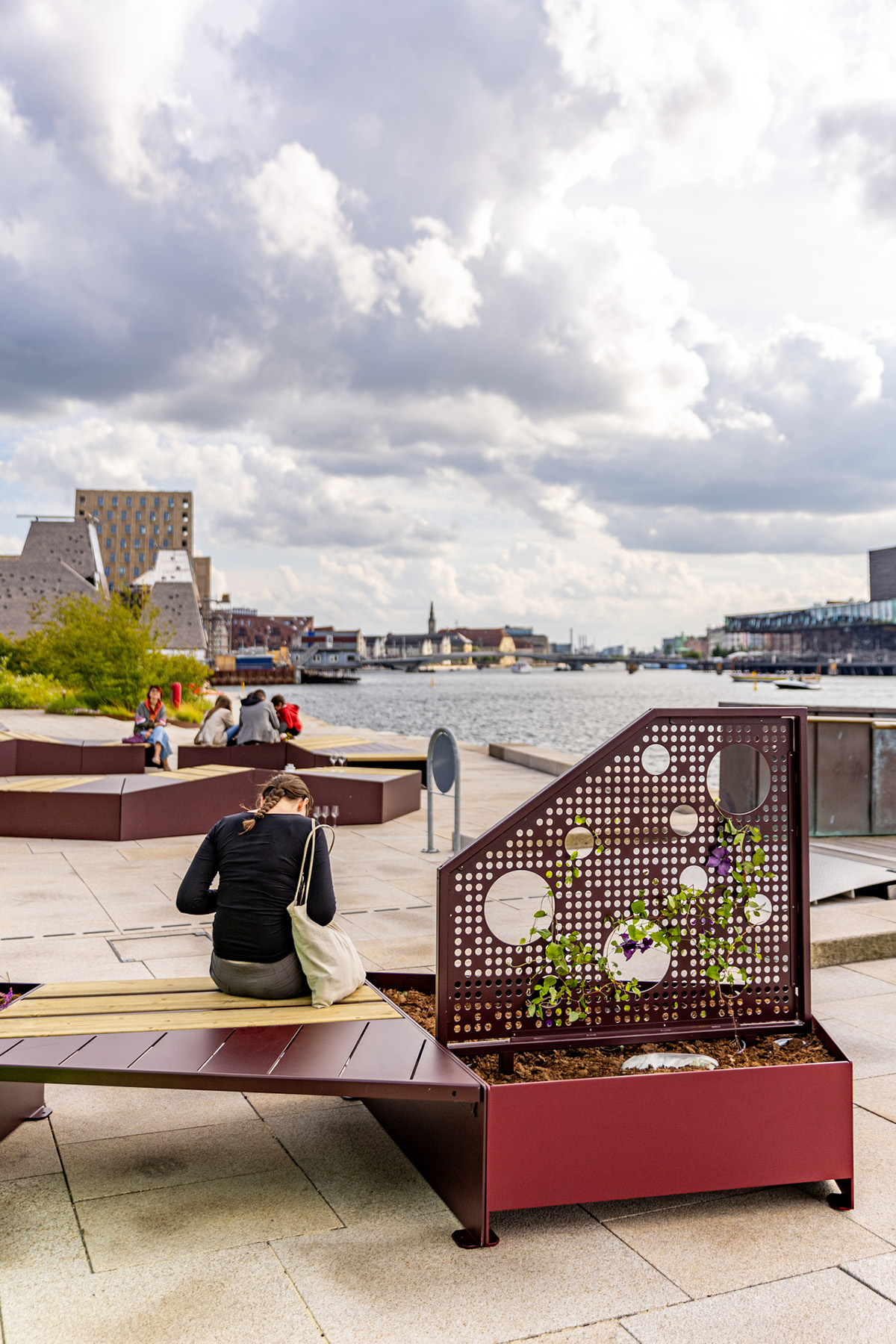
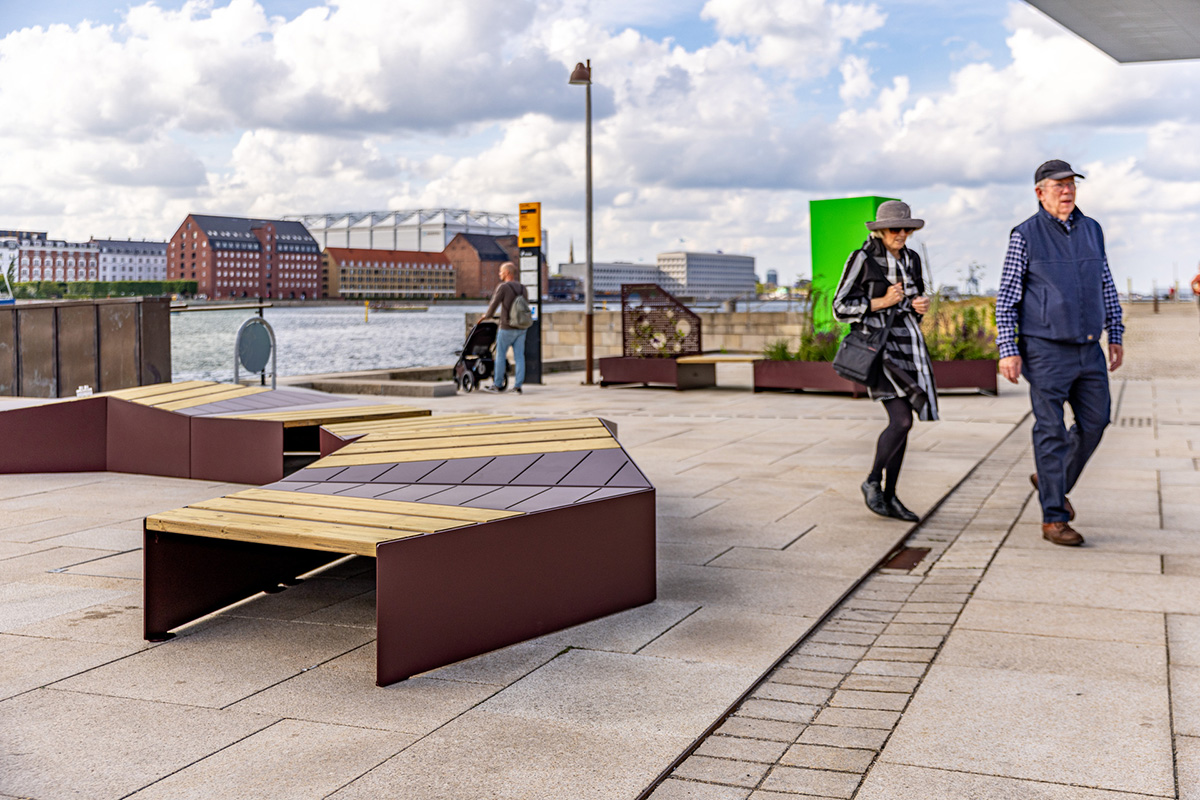
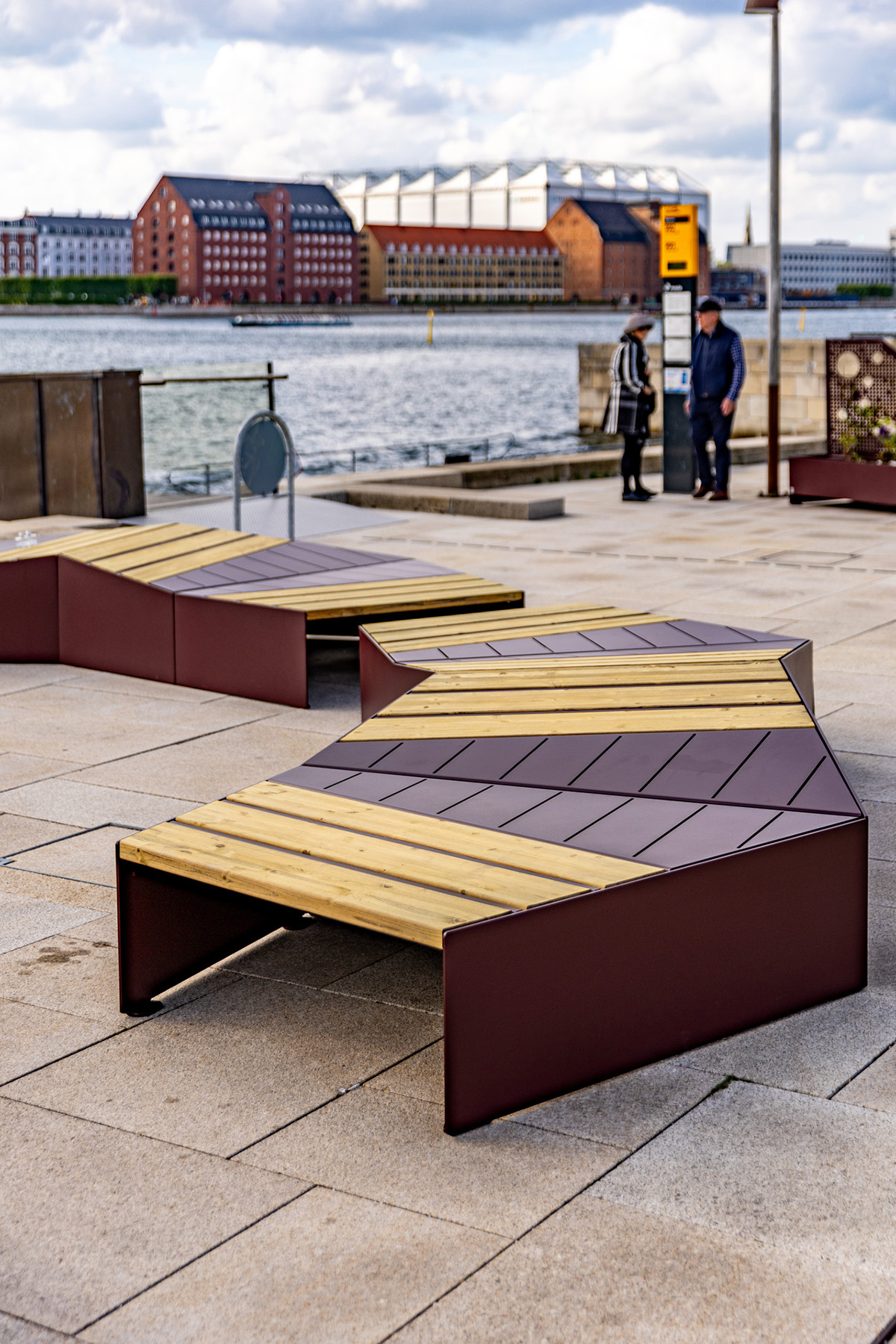
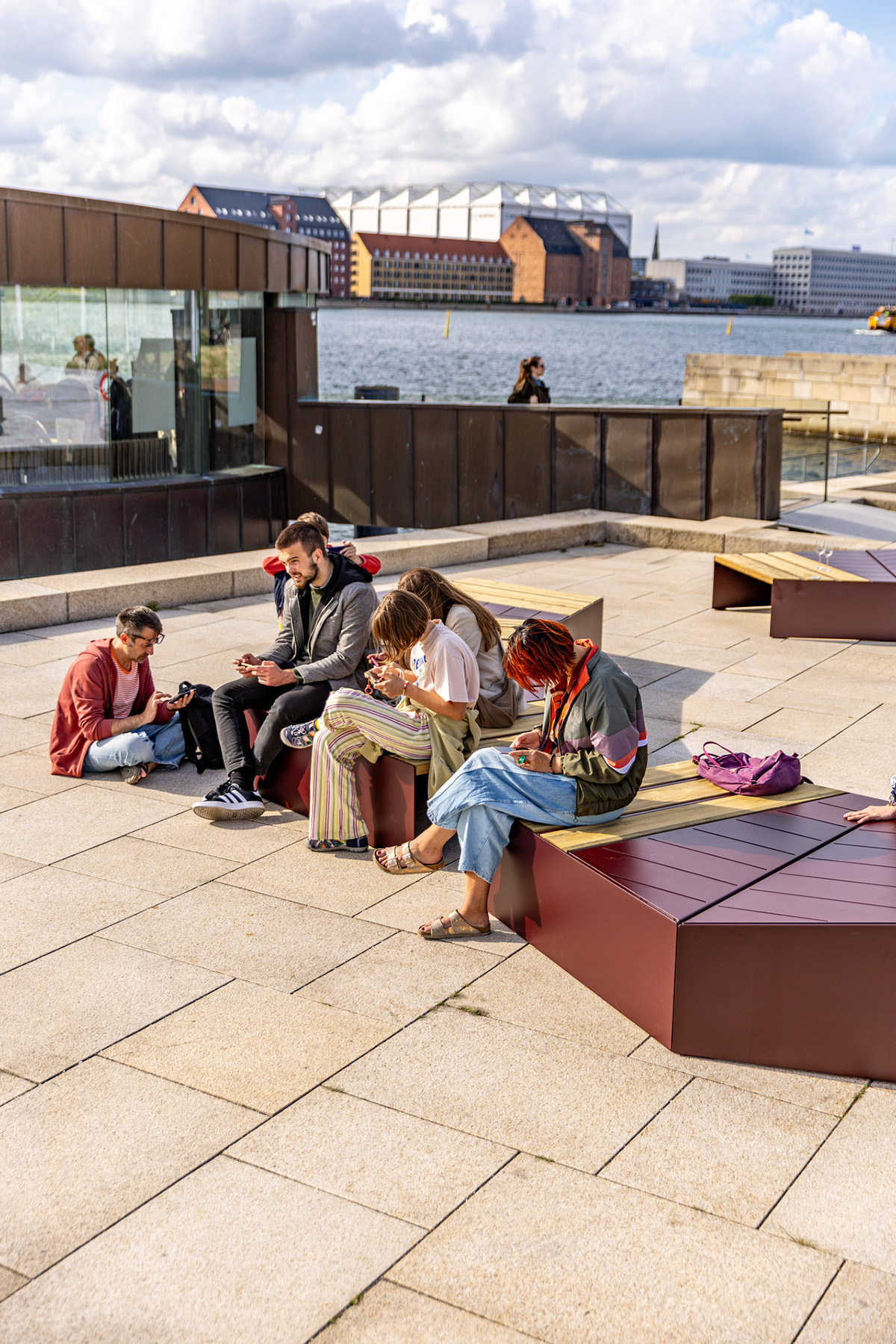
Photo: John Patterson

